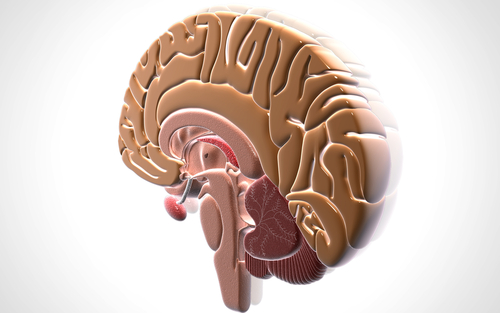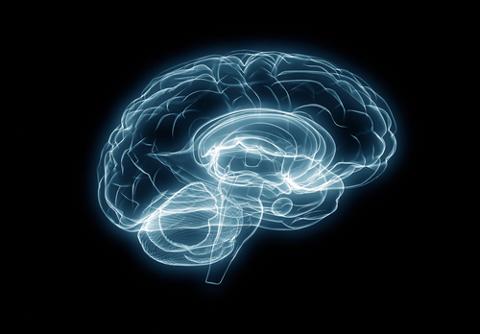 The brain remains one of humanity’s enduring mysteries, despite centuries’ worth of research into its innermost workings. It will take a lot of very sophisticated tools, paired with some cutting-edge data analytics, to finally figure out how neurons firing in a certain order results in thought and action. A group of researchers is taking a sizable step toward that goal with a new platform, OpenfMRI, which allows them to share and analyze brain scans from a variety of studies. According to a note posted on the Website of the Texas Advanced Computing Center (TACC), the project currently boasts 18 datasets’ worth of information from 350 human subjects. Partners in the project include Stanford, Harvard, the University of Colorado, Washington University, and The University of Texas at Austin. The brain scans used in OpenfMRI come from functional magnetic resonance imaging (fMRI) machines, which (according to TACC) “map neuronal activity based on blood oxygen levels in the brain.” Blood apparently has a “distinct magnetic signature” that such machines can detect throughout the subject’s brain, giving researchers some insight into the organ’s functions. "Large-scale data sharing efforts promise to enable researchers to address questions that are difficult to answer with the typical isolated fMRI study," Anthony Wagner, project participant and a professor of psychology and neuroscience at Stanford, wrote in a statement posted on TACC’s Website. "The OpenfMRI database, and related data sharing efforts, will enable large sample studies with the necessary power to understand individual differences as they relate to basic neuroscience questions and illness." OpenfMRI relies on TACC’s Lonestar and Stampede supercomputers, which use the fMRI images as the basis for 3D brain models. Program researchers can use those models to determine which neurons are sparking certain types of brain activity. The ultimate goal is to build a comprehensive model of the brain at work, from the most basic processes all the way up to higher cognition. That could give some insight into how and why brains break down, which could lead to future treatments. "If you want to understand where these disorders are coming from, you have to understand the building blocks, as they're the things that are going to break down and drive the disorder that you're interested in," Russell Poldrack, a professor of neuroscience at The University of Texas at Austin, is quoted as saying. "We're interested in figuring out how to extract those dimensions from the data." OpenfMRI isn’t the only project bringing Big Data to bear on brain function. For example, IBM is collaborating with Excel Medical Electronics (EME) and the UCLA Department of Neurosurgery on a system that could help predict dangerous brain pressure in patients with traumatic head injuries; Samsung, meanwhile, is researching how to control mobile devices via the power of thought. It might be several years before researchers make true headway into figuring out how our brains work, but there’s definitely progress being made. Image: Creations/Shutterstock.com
The brain remains one of humanity’s enduring mysteries, despite centuries’ worth of research into its innermost workings. It will take a lot of very sophisticated tools, paired with some cutting-edge data analytics, to finally figure out how neurons firing in a certain order results in thought and action. A group of researchers is taking a sizable step toward that goal with a new platform, OpenfMRI, which allows them to share and analyze brain scans from a variety of studies. According to a note posted on the Website of the Texas Advanced Computing Center (TACC), the project currently boasts 18 datasets’ worth of information from 350 human subjects. Partners in the project include Stanford, Harvard, the University of Colorado, Washington University, and The University of Texas at Austin. The brain scans used in OpenfMRI come from functional magnetic resonance imaging (fMRI) machines, which (according to TACC) “map neuronal activity based on blood oxygen levels in the brain.” Blood apparently has a “distinct magnetic signature” that such machines can detect throughout the subject’s brain, giving researchers some insight into the organ’s functions. "Large-scale data sharing efforts promise to enable researchers to address questions that are difficult to answer with the typical isolated fMRI study," Anthony Wagner, project participant and a professor of psychology and neuroscience at Stanford, wrote in a statement posted on TACC’s Website. "The OpenfMRI database, and related data sharing efforts, will enable large sample studies with the necessary power to understand individual differences as they relate to basic neuroscience questions and illness." OpenfMRI relies on TACC’s Lonestar and Stampede supercomputers, which use the fMRI images as the basis for 3D brain models. Program researchers can use those models to determine which neurons are sparking certain types of brain activity. The ultimate goal is to build a comprehensive model of the brain at work, from the most basic processes all the way up to higher cognition. That could give some insight into how and why brains break down, which could lead to future treatments. "If you want to understand where these disorders are coming from, you have to understand the building blocks, as they're the things that are going to break down and drive the disorder that you're interested in," Russell Poldrack, a professor of neuroscience at The University of Texas at Austin, is quoted as saying. "We're interested in figuring out how to extract those dimensions from the data." OpenfMRI isn’t the only project bringing Big Data to bear on brain function. For example, IBM is collaborating with Excel Medical Electronics (EME) and the UCLA Department of Neurosurgery on a system that could help predict dangerous brain pressure in patients with traumatic head injuries; Samsung, meanwhile, is researching how to control mobile devices via the power of thought. It might be several years before researchers make true headway into figuring out how our brains work, but there’s definitely progress being made. Image: Creations/Shutterstock.com Supercomputers and Analytics: Figuring Out the Human Brain
 The brain remains one of humanity’s enduring mysteries, despite centuries’ worth of research into its innermost workings. It will take a lot of very sophisticated tools, paired with some cutting-edge data analytics, to finally figure out how neurons firing in a certain order results in thought and action. A group of researchers is taking a sizable step toward that goal with a new platform, OpenfMRI, which allows them to share and analyze brain scans from a variety of studies. According to a note posted on the Website of the Texas Advanced Computing Center (TACC), the project currently boasts 18 datasets’ worth of information from 350 human subjects. Partners in the project include Stanford, Harvard, the University of Colorado, Washington University, and The University of Texas at Austin. The brain scans used in OpenfMRI come from functional magnetic resonance imaging (fMRI) machines, which (according to TACC) “map neuronal activity based on blood oxygen levels in the brain.” Blood apparently has a “distinct magnetic signature” that such machines can detect throughout the subject’s brain, giving researchers some insight into the organ’s functions. "Large-scale data sharing efforts promise to enable researchers to address questions that are difficult to answer with the typical isolated fMRI study," Anthony Wagner, project participant and a professor of psychology and neuroscience at Stanford, wrote in a statement posted on TACC’s Website. "The OpenfMRI database, and related data sharing efforts, will enable large sample studies with the necessary power to understand individual differences as they relate to basic neuroscience questions and illness." OpenfMRI relies on TACC’s Lonestar and Stampede supercomputers, which use the fMRI images as the basis for 3D brain models. Program researchers can use those models to determine which neurons are sparking certain types of brain activity. The ultimate goal is to build a comprehensive model of the brain at work, from the most basic processes all the way up to higher cognition. That could give some insight into how and why brains break down, which could lead to future treatments. "If you want to understand where these disorders are coming from, you have to understand the building blocks, as they're the things that are going to break down and drive the disorder that you're interested in," Russell Poldrack, a professor of neuroscience at The University of Texas at Austin, is quoted as saying. "We're interested in figuring out how to extract those dimensions from the data." OpenfMRI isn’t the only project bringing Big Data to bear on brain function. For example, IBM is collaborating with Excel Medical Electronics (EME) and the UCLA Department of Neurosurgery on a system that could help predict dangerous brain pressure in patients with traumatic head injuries; Samsung, meanwhile, is researching how to control mobile devices via the power of thought. It might be several years before researchers make true headway into figuring out how our brains work, but there’s definitely progress being made. Image: Creations/Shutterstock.com
The brain remains one of humanity’s enduring mysteries, despite centuries’ worth of research into its innermost workings. It will take a lot of very sophisticated tools, paired with some cutting-edge data analytics, to finally figure out how neurons firing in a certain order results in thought and action. A group of researchers is taking a sizable step toward that goal with a new platform, OpenfMRI, which allows them to share and analyze brain scans from a variety of studies. According to a note posted on the Website of the Texas Advanced Computing Center (TACC), the project currently boasts 18 datasets’ worth of information from 350 human subjects. Partners in the project include Stanford, Harvard, the University of Colorado, Washington University, and The University of Texas at Austin. The brain scans used in OpenfMRI come from functional magnetic resonance imaging (fMRI) machines, which (according to TACC) “map neuronal activity based on blood oxygen levels in the brain.” Blood apparently has a “distinct magnetic signature” that such machines can detect throughout the subject’s brain, giving researchers some insight into the organ’s functions. "Large-scale data sharing efforts promise to enable researchers to address questions that are difficult to answer with the typical isolated fMRI study," Anthony Wagner, project participant and a professor of psychology and neuroscience at Stanford, wrote in a statement posted on TACC’s Website. "The OpenfMRI database, and related data sharing efforts, will enable large sample studies with the necessary power to understand individual differences as they relate to basic neuroscience questions and illness." OpenfMRI relies on TACC’s Lonestar and Stampede supercomputers, which use the fMRI images as the basis for 3D brain models. Program researchers can use those models to determine which neurons are sparking certain types of brain activity. The ultimate goal is to build a comprehensive model of the brain at work, from the most basic processes all the way up to higher cognition. That could give some insight into how and why brains break down, which could lead to future treatments. "If you want to understand where these disorders are coming from, you have to understand the building blocks, as they're the things that are going to break down and drive the disorder that you're interested in," Russell Poldrack, a professor of neuroscience at The University of Texas at Austin, is quoted as saying. "We're interested in figuring out how to extract those dimensions from the data." OpenfMRI isn’t the only project bringing Big Data to bear on brain function. For example, IBM is collaborating with Excel Medical Electronics (EME) and the UCLA Department of Neurosurgery on a system that could help predict dangerous brain pressure in patients with traumatic head injuries; Samsung, meanwhile, is researching how to control mobile devices via the power of thought. It might be several years before researchers make true headway into figuring out how our brains work, but there’s definitely progress being made. Image: Creations/Shutterstock.com 